
Parental Arts
Why It's Important to Teach Black History All Year
Marketa Howard of School at Home and Beyond shares tips for ensuring your child receives a culturally inclusive education.
- Written By
- Marketa Howard
“We must take man himself, take him with patience and confidence, across all the planes of education. We must put everything before him, the school, culture, religion, the world itself. We must help him to develop within himself that which will make him capable of understanding. It is not merely words, it is a labor of education. This will be a preparation for peace — for peace cannot exist without justice and without men endowed with a strong personality and a strong conscience.”
-Dr. Maria Montessori
Have you heard words like “diversity and inclusion” and wondered what’s the big deal? Why is there this push for an inclusive education with diverse perspectives? Why do we encourage children to learn about people of other cultures? How does it benefit them?
Learning about the world from diverse perspectives helps children develop a strong capacity for critical analysis and helps expand their world! After all, what is education without exposure to people and points of view that are different from our own? An inclusive education supports children as they develop a strong sense of self without the crutch of needing to feel “better than” or superior to anyone else. When speaking about the importance of multicultural children’s literature, Dr. Rudine Sims Bishop, Professor Emerita of Education at The Ohio State University, uses metaphor to compare books to mirrors, windows, and sliding glass doors. According to Dr. Bishop, books as mirrors reflect the child’s own culture. These books affirm the child’s identity. Books as windows give the child a look into the lives of others, a view of someone else’s experience that they may not otherwise have. Our young children desperately need both — mirrors and windows. Dr. Bishop writes, “When lighting conditions are just right, a window can also be a mirror. Literature transforms human experience and reflects it back to us, and in that reflection we can see our own lives and experiences as part of the larger human experience.” And that’s just it. When children learn about others they gain the capacity to learn about themselves.


In our home, we study Black history and culture throughout the year as it is an integral part of American history. For us, the month of February serves as a celebration of Black culture rather than an overview of a few high-level historic points. We also incorporate all cultures in our geography studies and make it a point to learn about people of diverse backgrounds throughout the year. This way we avoid the “tourist curriculum” which according to "Anti-Bias Education for Young Children & Ourselves," “communicates the bias that some people’s lives are the normal way to be while others are worth only an occasional visit. [The tourist curriculum] presents a limited, simplistic, often inaccurate view of people’s lives and reduces rich patterns of cultures to one or two small bits of information that are taken out of context.”
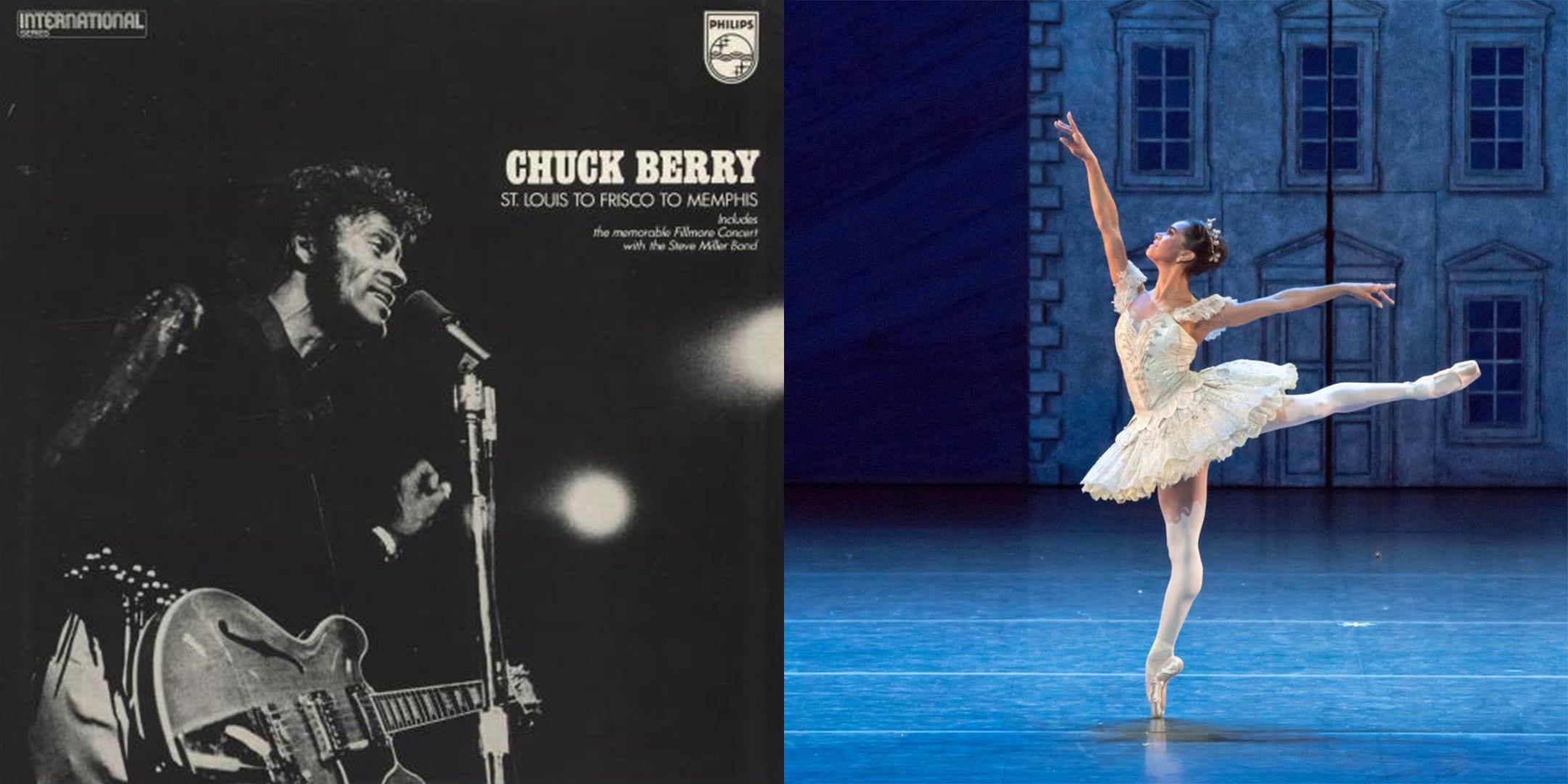
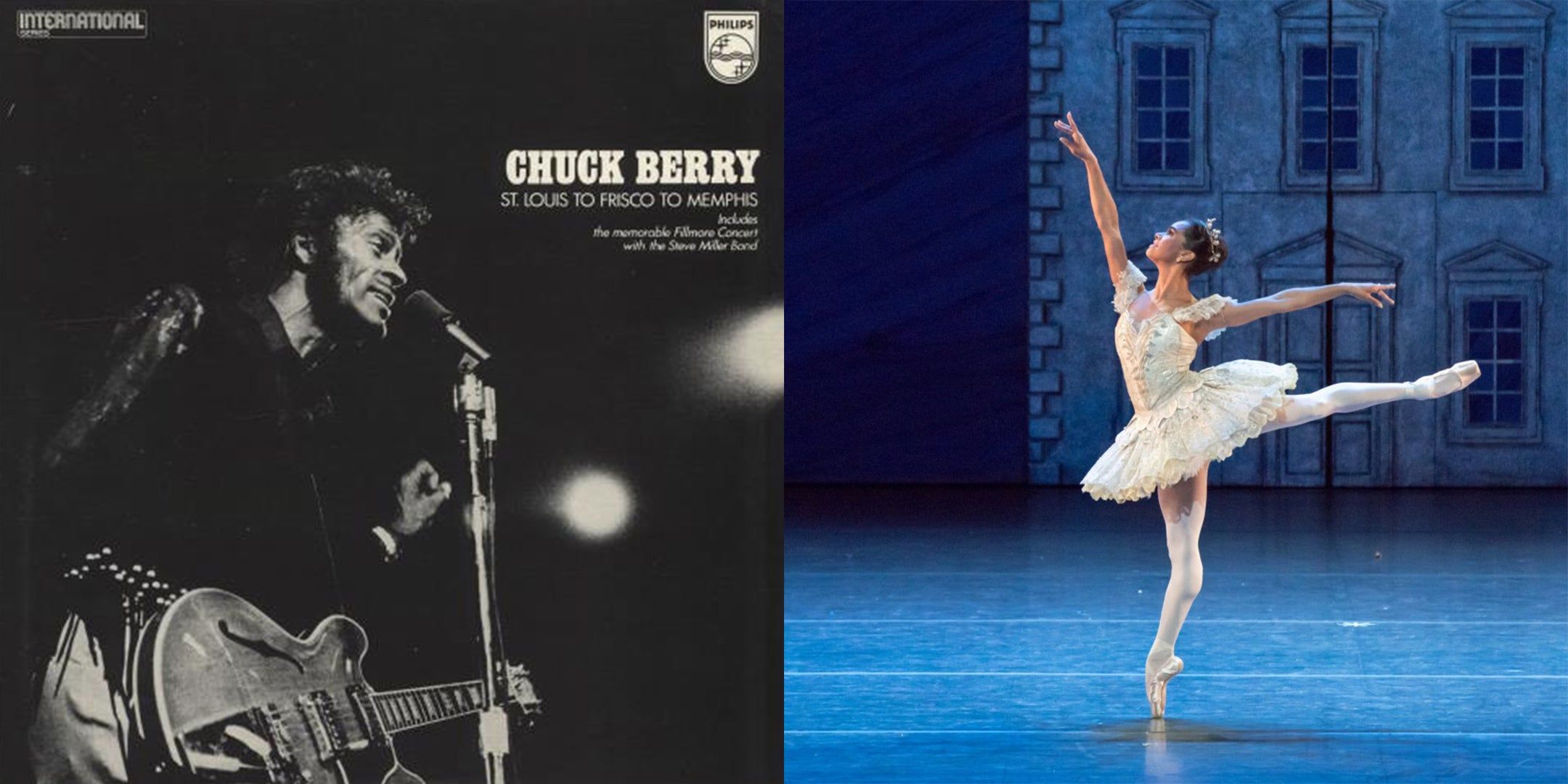
How can you lay the foundation for a culturally inclusive education in your home? First, ensure that young children are exposed to diversity on a regular basis. This includes daily exposure to people, and/or images of people, from diverse backgrounds via books, toys, puzzles, music, and media. Teach your children to value other cultures as much as they value their own! Present your toddlers with the popular illustration which shows how brown and white eggs may look different on the outside, but when you crack them open they look the same on the inside.
Highlight the many historic contributions Black people have made to human civilization! Tell stories about scientists like Garrett A. Morgan, the inventor of the modern day traffic signal with it’s red, green, and yellow lights. Point out that many historic American landmarks, including the White House, The Capitol building, Wall Street, and Monticello, were built by the hands of Black people. Incorporate arts and crafts into these discussions complete with multicultural paint and crayons.
And be sure to teach your child at their level of understanding. It’s not developmentally appropriate to teach our elementary school learners about enslavement. To do so minimizes the institution of slavery and its impact on the entire world. But when children are young we can share the achievements of Black people in music by highlighting pioneers like Little Richard, Chuck Berry, and Big Maybelle, the originators of rock and roll.
We can sit in awe with our children while watching ballet performances by Alvin Ailey and Misty Copeland. We can pick-up cookbooks like "Vegan Soul Kitchen" by Bryant Terry and make traditional soul food with our children while playing jazz music by John Coltrane or Miles Davis.
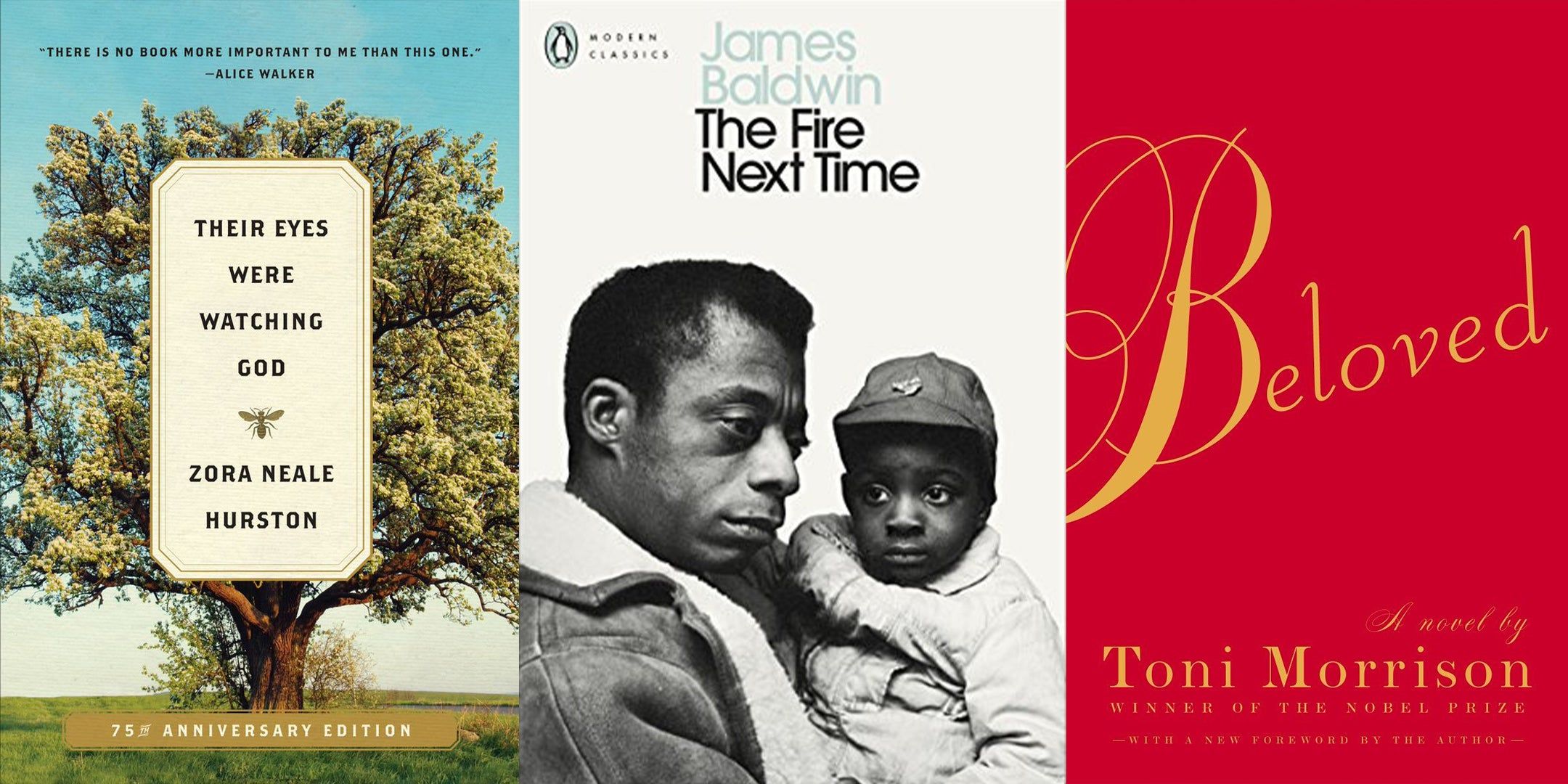
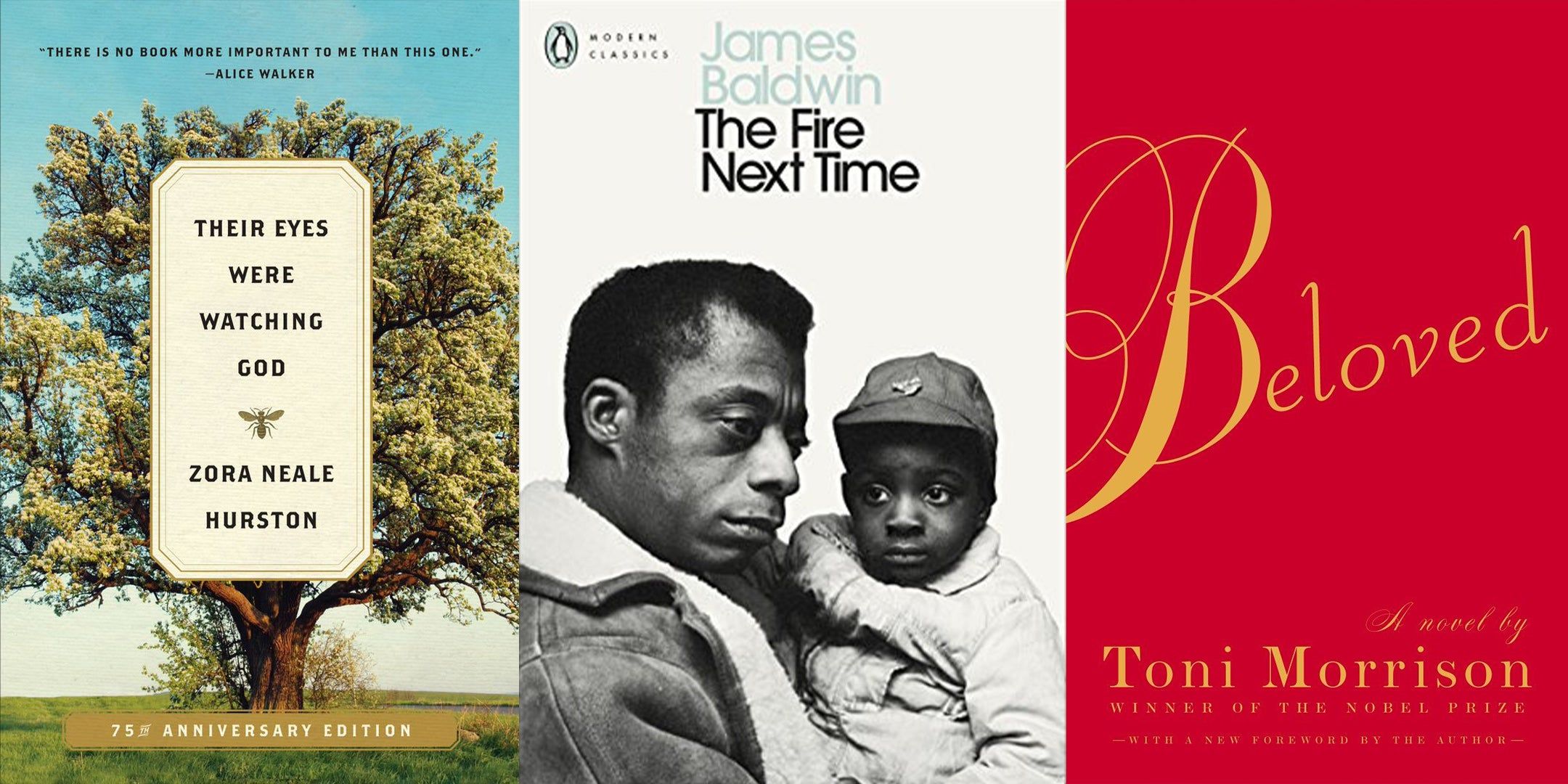
For older children, work through explicit and implicit biases while you have the chance. For example, encourage them to write down stereotypes or biases they’ve heard about other cultures and teach them to critically examine those biases. Teach them the importance of using accurate language. Train them to capitalize the “B” in Black when referring to Black people because the word represents identity and culture, and carries with it a sense of pride, an acknowledgment of struggle, and the rich history of African ancestors that extends tens of thousands of years. Instruct them to replace the term “slave” with “enslaved person” and remind them that these people were human first, commodities second.
Watch documentaries with your older children like, “The African Americans: Many Rivers to Cross with Henry Louis Gates, Jr.”, a film that condenses the trajectory of African American history into a six-part series. Read powerful books like Zora Neale Hurston’s, "Their Eyes Were Watching God," James Baldwin’s, "The Fire Next Time," or Toni Morrison’s, "Beloved," because books like these serve as a looking glass into Black history and culture. In studying Black history through film and texts, older children gain clarity on complex social issues and learn to challenge and resist the status quo, which is deeply rooted in oppression.

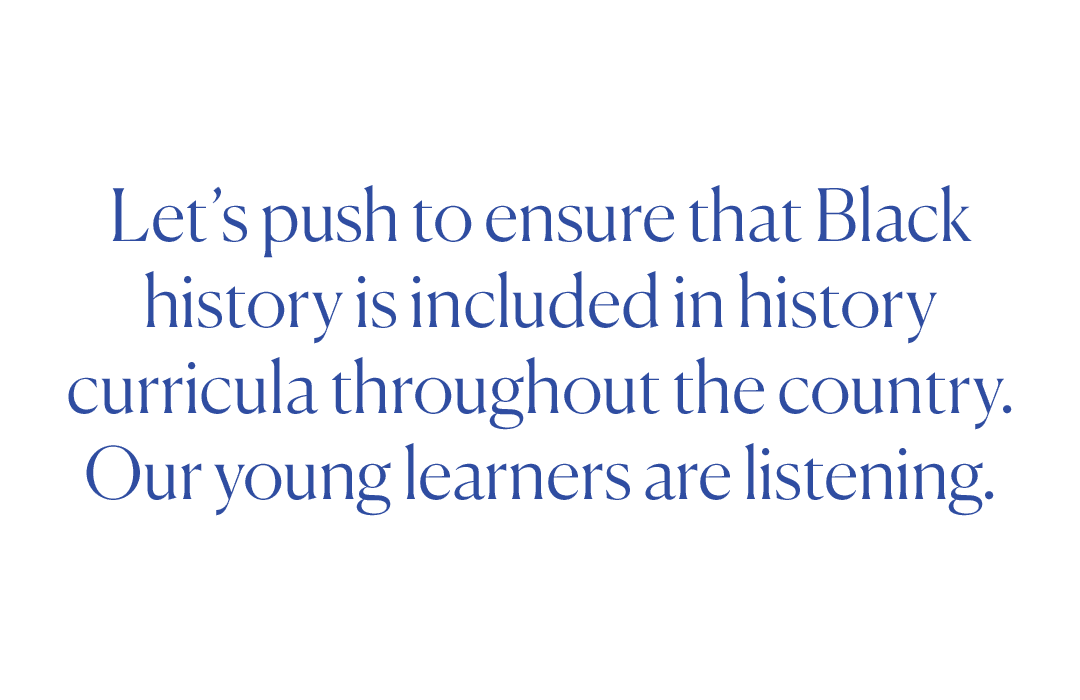
What can you do outside the home? How can you make sure Black history is a regular part of your child’s education? Challenge local school administrators to include Black history throughout your child’s entire history curriculum. Insist that educators go beyond a cursory exploration of Black history. For instance, when high schoolers learn about the “The New Deal”, which helped the American economy climb out of the Great Depression, they should learn about initiatives like the “Home Owners Loan Corporation”, an organization that guaranteed home loans to everyone except Black people. And when discussing American life in the 1920s, educators should be sure to include a segment on the history of Black Wall Street — a bustling, affluent African American community in the Greenwood District of Tulsa, Oklahoma, much of which was burned down in a blaze of domestic white terrorism. As we increase demand for culturally inclusive texts publishers will rise to meet the demand. Let’s push to ensure that Black history is included in history curricula throughout the country. Our young learners are listening. They are watching. And they are depending on us.
Suggested Reading
"Timelines from Black History: Leaders, Legends, Legacies," Published by DK Publishing
"Anti-Bias Education for Young Children & Ourselves" by Louise Derman-Sparks & Julie Olsen Edwards with Catherine M. Goins
The Case for Reparations by Ta-Nehisi Coates, printed in The Atlantic
"The New Jim Crow" by Michelle Alexander
"How to Be an Antiracist" by Ibram X. Kendi
"The Isis Papers" by Francis Cress Welsing